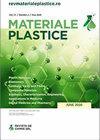3D打印ABS及碳纤维增强ABS复合材料的准静态和动态力学分析
IF 0.6
4区 材料科学
Q4 MATERIALS SCIENCE, MULTIDISCIPLINARY
引用次数: 0
摘要
熔融长丝制造(FFF)是打印聚合物和复合材料产品中最流行和应用最广泛的增材制造工艺。各种生产因素会影响3D打印制造的零件的强度和刚度。本研究对FFF工艺参数(填充密度、花纹、层厚)对力学性能和破坏机理的影响进行了综合实验分析。拉伸、弯曲和冲击试验试样按照ASTM标准使用ABS和碳纤维增强ABS长丝进行打印。此外,除了静态性能外,还利用动态力学分析方法研究了在温度和频率影响下的损耗因子和玻璃化转变温度。结果表明,碳纤维的加入提高了ABS的力学性能。利用光学显微镜和扫描电镜图像研究了失效模式,可以看出,由于层沉积不当,前一层之间的结合不良,填充密度低,在试样中产生空洞,导致力学性能差。动态力学分析表明,在较高的频率下,分子运动减少,从而稳定了复合材料的行为,降低了损失因子。本文章由计算机程序翻译,如有差异,请以英文原文为准。
Quasi Static and Dynamic Mechanical Analysis of 3D Printed ABS and Carbon Fiber Reinforced ABS Composites
Fused Filament Fabrication (FFF) is the most popular and widely used additive manufacturing process for printing polymer and composite products. Various production factors influenced the strength and stiffness of the part manufactured by 3D printing. A comprehensive experimental analysis was conducted in this study to examine the effect of FFF process parameters (infill density, pattern, and layer thickness) on mechanical properties and failure mechanism. The tensile, flexural, and impact test specimens were printed using ABS and carbon fibre reinforced ABS filaments in accordance with ASTM standards. Furthermore, dynamic properties are studied using dynamic mechanical analysis to estimate the loss factor and glass transition temperature under the impact of temperature and frequency in addition to static properties. Further, the results showed the addition of carbon fiber in ABS increases the mechanical properties. The failure modes are studied using optical microscopy and Scanning Electron Microscopy images and it has been visualized that due to improper layer deposition, poor bonding between the previous layer and low infill density creates a void in the specimen which results in poor mechanical properties. The Dynamic Mechanical Analysis showed that at higher frequency the molecular movement decreases which in turn stabilizes the composite behavior and reduces the loss factor.
求助全文
通过发布文献求助,成功后即可免费获取论文全文。
去求助
来源期刊

Materiale Plastice
MATERIALS SCIENCE, MULTIDISCIPLINARY-
CiteScore
1.40
自引率
25.00%
发文量
99
审稿时长
6-12 weeks
期刊介绍:
Materiale Plastice, abbreviated as Mater. Plast., publishes original scientific papers or guest reviews on topics of great interest.
The Journal does not publish memos, technical reports or non-original papers (that are a compiling of literature data) or papers that have been already published in other national or foreign Journal.
 求助内容:
求助内容: 应助结果提醒方式:
应助结果提醒方式:


